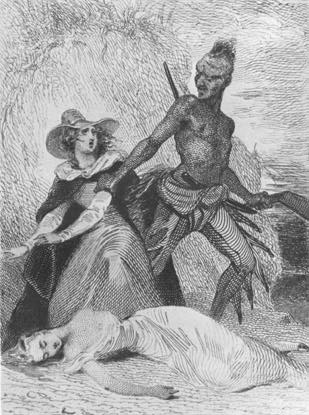Keeley produces evidence of frequent deadly raids and occasional wholesale massacres over much of prehistoric North America, arguing that this archaeological evidence indicates that these massacres were not only prior to Western contact, but also more severe than anything reported in the ethnographic record for the region.
Suppose prehistoric America had 100 Indian tribes. Suppose Keeley found evidence of massacres for each of the 100 tribes. That would be pretty good proof that Indian tribes were violent and warlike.
Now suppose prehistoric America had 1,000 Indian tribes, not 100. Suppose Keeley found evidence of massacres for the same 100 tribes as before. What could he conclude?
He could conclude that his data was woefully incomplete. Or he could conclude that 90% of Indian tribes were peaceful and nonviolent because he didn't find evidence of their violent, warlike nature.
I trust you see my point. How do you survey tribes that don't leave evidence of a violent, warlike nature? Seems to me you'd have to look at a comprehensive database of Indian remains from across North America and South America. I'm pretty sure no such database exists.
Evidence is incomplete
Even if a database did exist, it would be incomplete and misleading. What about the tribes we have no evidence for? Maybe they disappeared precisely because they were too peaceful and nonviolent to resist an invading force.
What about tribes that split or merged because of violence? If Tribe A conquered Tribe B, Tribe B might well have been peaceful. If Keeley identified a massacre site, it might prove that one tribe was violent, but it wouldn't prove that both were.
The same applies if the peaceful half of Tribe A split from the warlike half. If Keeley identified a massacre site, he might conclude that Tribe A was violent. That would obscure the fact that only the old Tribe A was violent. New Tribe B wasn't violent and shouldn't count toward the violent total.
You see how many methodological problems there are when trying to decipher overall cultural patterns from a smattering of remains? I'd say it's almost impossible to do it with any accuracy.
Keeley's faux statistic
But I'd love to see how Keeley managed it. His claim that 87% of American Indian tribes engaged in war at least once a year is ridiculously precise. Does that mean he surveyed 100% of these tribes and found remains marked by warfare for every year of every tribe's existence? That's extremely hard to believe.
To make this clear, let's take an example. The Hopi and Acoma tribes claim to have lived in the same location since AD 1250. How would you prove they've engaged in warfare at least once a year since then? You'd have to find Hopi and Acoma skeletons marked by warfare for the years 1250, 1251, 1252, 1253, and so forth through 1492 (if that was your cutoff point).
Needless to say, it's impossible to date ancient skeletons to a particular year. I'm pretty sure we have huge gaps in the archaeological record for every pre-Columbian tribe. I'd be amazed if we had a complete record for even one tribe.
Similarly, it's impossible to distinguish Hopi and Acoma skeletons from skeletons of other Indians who may have died in the area. If a band of Apaches ambushed a band of Navajos who were passing through Acoma territory and killed them all, you'd have several Navajo skeletons and a few Apache ones. If you concluded the Acoma were violent from this, you'd be dead wrong. There's no way you could come to the correct conclusion: that the Apache Indians were violent while the Navajo and Acoma Indians weren't.
Al Carroll speaks
Correspondent Al Carroll concurs with my assessment:
The Swiss would be lumped in as warlike, despite a thousand year history of neutrality, because some small number of Swiss hire out as mercenaries.
So would today's Swedes because they once were an expansionist state back in the 18th century.
And like you point out, we don't have nearly a comprehensive enough record of tribes, only a very fragmentary one. What we do have that is far more complete is oral traditions, and some of them like the Hopi and Zuni are extremely clear about avoiding conflict unless directly attacked. Others like the Inuit and most California and Great Basin tribes are quite explicit that warfare was simply not known to them.
How he defines war is extremely vague. There's a huge difference between raids to take food from another tribe and wars of extermination like European colonialists sometimes practiced in places like Newfoundland, Tasmania, and SW Africa. Your average gang or criminal organization today is more violent than many of the old tribes once were, yet we don't call what they do as "warfare" except as hyperbole.


1 comment:
Ah yes it's either lies about human sacrifice or cannibalism; it's sad to see that some people are still using the 'classic' methods to dehumanize a group.
Post a Comment